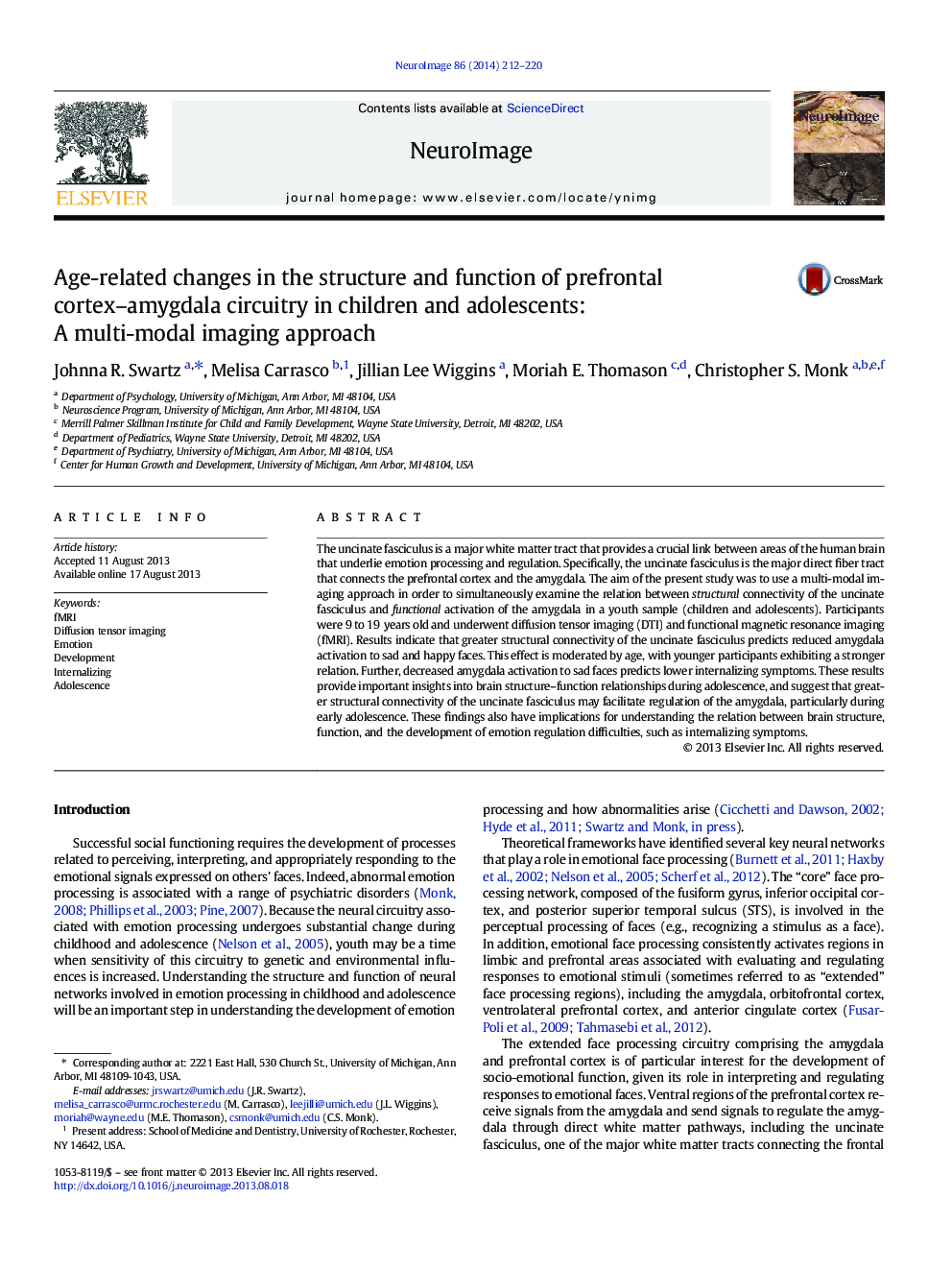| کد مقاله | کد نشریه | سال انتشار | مقاله انگلیسی | نسخه تمام متن |
|---|---|---|---|---|
| 6027764 | 1580919 | 2014 | 9 صفحه PDF | دانلود رایگان |
عنوان انگلیسی مقاله ISI
Age-related changes in the structure and function of prefrontal cortex-amygdala circuitry in children and adolescents: A multi-modal imaging approach
ترجمه فارسی عنوان
تغییرات مرتبط با سن در ساختار و عملکرد مغناطیسی قشر پیش مدینی در کودکان و نوجوانان: یک روش تصویربرداری چندبعدی
دانلود مقاله + سفارش ترجمه
دانلود مقاله ISI انگلیسی
رایگان برای ایرانیان
کلمات کلیدی
موضوعات مرتبط
علوم زیستی و بیوفناوری
علم عصب شناسی
علوم اعصاب شناختی
چکیده انگلیسی
The uncinate fasciculus is a major white matter tract that provides a crucial link between areas of the human brain that underlie emotion processing and regulation. Specifically, the uncinate fasciculus is the major direct fiber tract that connects the prefrontal cortex and the amygdala. The aim of the present study was to use a multi-modal imaging approach in order to simultaneously examine the relation between structural connectivity of the uncinate fasciculus and functional activation of the amygdala in a youth sample (children and adolescents). Participants were 9 to 19Â years old and underwent diffusion tensor imaging (DTI) and functional magnetic resonance imaging (fMRI). Results indicate that greater structural connectivity of the uncinate fasciculus predicts reduced amygdala activation to sad and happy faces. This effect is moderated by age, with younger participants exhibiting a stronger relation. Further, decreased amygdala activation to sad faces predicts lower internalizing symptoms. These results provide important insights into brain structure-function relationships during adolescence, and suggest that greater structural connectivity of the uncinate fasciculus may facilitate regulation of the amygdala, particularly during early adolescence. These findings also have implications for understanding the relation between brain structure, function, and the development of emotion regulation difficulties, such as internalizing symptoms.
ناشر
Database: Elsevier - ScienceDirect (ساینس دایرکت)
Journal: NeuroImage - Volume 86, 1 February 2014, Pages 212-220
Journal: NeuroImage - Volume 86, 1 February 2014, Pages 212-220
نویسندگان
Johnna R. Swartz, Melisa Carrasco, Jillian Lee Wiggins, Moriah E. Thomason, Christopher S. Monk,
